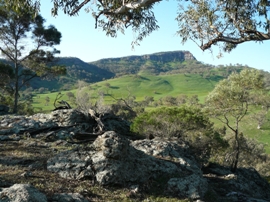Regional profile
Our landscape

Our people
The catchment’s population of around 105,000 people is concentrated along the Murray and Edward–Kolety river systems in towns such as Corowa, Moama, Deniliquin, Tocumwal, Holbrook, and our only major city, Albury. Many of these population centres are closely linked to nearby Victorian communities and services. Many rural villages also service their local and often remote communities.
Our economy
Land and water resources within the Murray catchment support diverse agricultural enterprises, including cropping, grazing and horticulture. There is also an increasing interest in mineral and coal deposits. Extensive water supply infrastructure—including Australia’s largest irrigation network and the famous Snowy Mountain Hydro-Electric Scheme—supplements low rainfall areas to support viable towns and industries.
Much of the catchment’s multibillion dollar economy therefore depends on continuing access to, and the productivity of, its natural resources. Approximately one-third of our residents are directly involved in agriculture alone.
Although there are significant physical and climatic differences between east and west, issues identified by the catchment community are often similar. For example, the need to control weeds and pests, strengthen community cohesion, improve infrastructure and services, and sustainably manage soils and rivers are consistent across the catchment. A universal willingness also exists to look after ‘our patch’, but many people are limited in their capacity to do so.